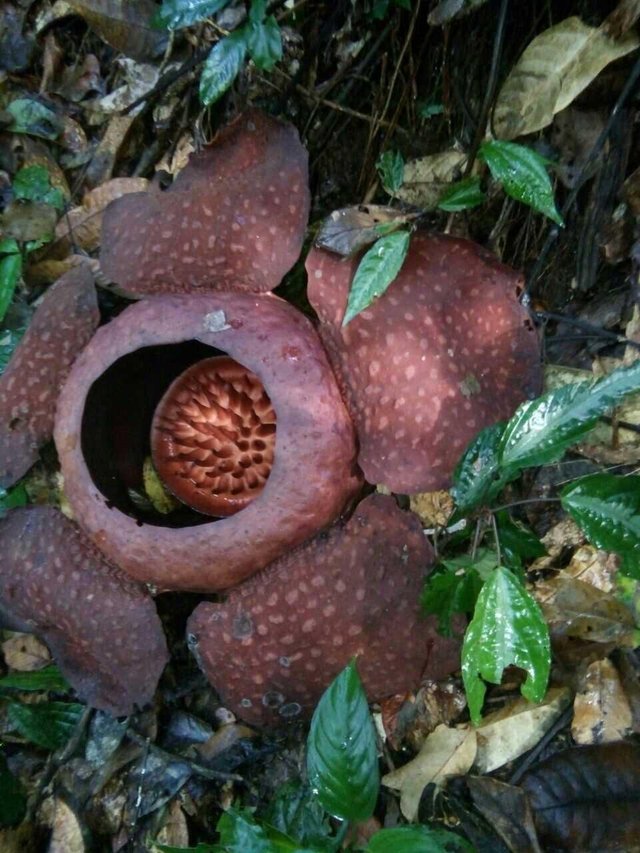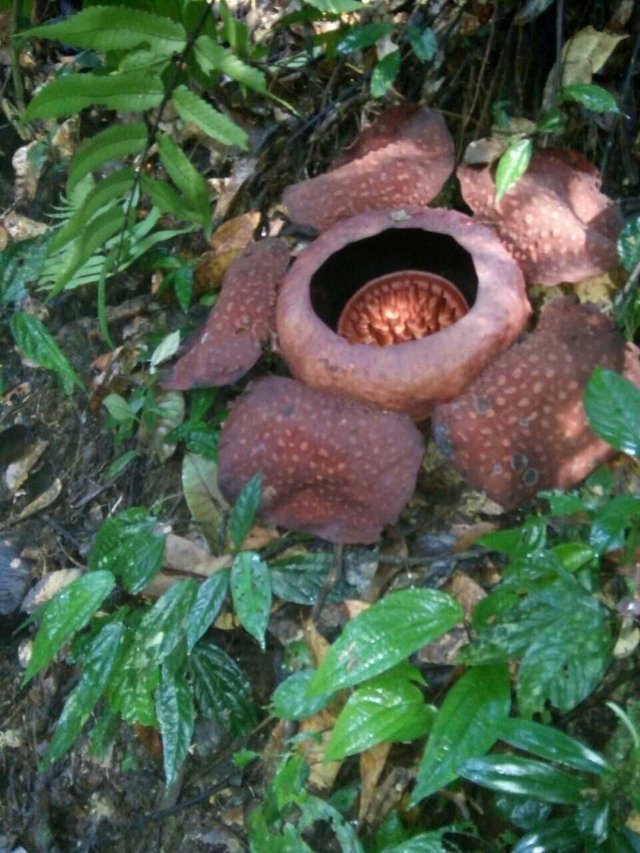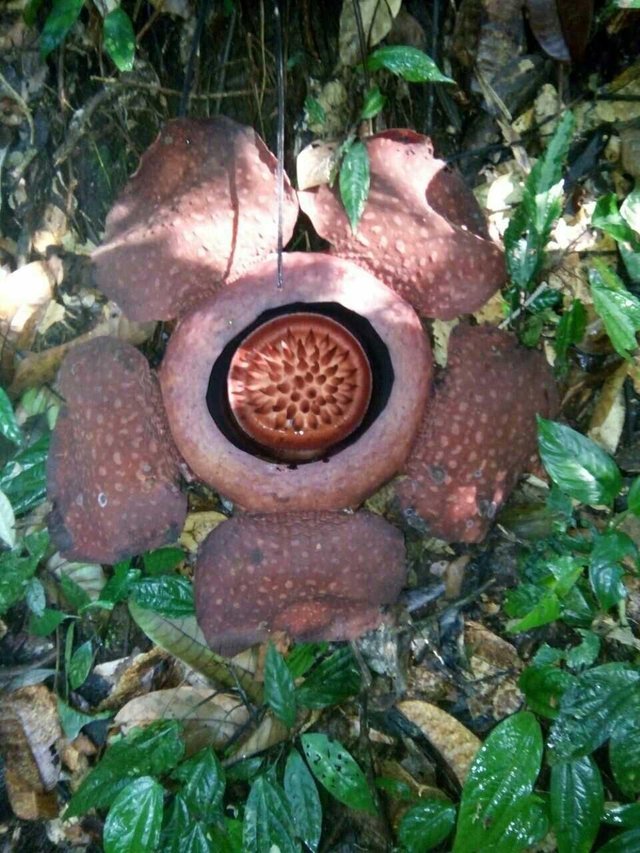Rafflesia Arnoldii, Giant Carcass Flower
The giant carcass or suweg or krebuit (local name for the vegetative phase), Amorphophallus titanum Becc., Is a plant of the endemic tribal (Araceae) tribe of Sumatra, Indonesia, known as the largest flowering plant in the world, although the record mentions that his relatives, A. gigas (also endemic from Sumatra) can produce flowers as high as 5m.

The gigantic Padma (Rafflesia arnoldii) is a famous obligate parasite plant having a very large flower, even the largest flower in the world. It grows in the plant tissue vine (liana) Tetrastigma and has no leaves so it is not able to photosynthesize.

Flowers are not rooted parasites, leafless, and not stemmed. Flower diameter when blooming can reach 1 meter with weight about 11 kilogram. Flowers suck the inorganic and organic elements of the Tetrastigma host plant. The only part that can be called a "plant" is a network that grows in the vines Tetrastigma. Flowers have five crowns that surround a section that looks like a barrel's mouth. At the base of the flower there is a section like a spiny disk, containing stamens or pistils depending on the sex of the flower, male or female.

Animals pollinators are flies that are attracted by the foul smell issued by flowers. Flowers are only about a week old (5-7 days) and after that wither and die. The percentage of conception is very small, because the male flowers and female flowers very rarely can bloom together in one week, even if there are flies that come to fertilize.
Its name comes from its flower that smells like a rotting carcass, intended to actually invite beetles and flies pollinators for its flowers. Carrion flowers are also often used as a nickname for the giant patriarch Rafflesia arnoldii. In nature this plant lives in wet rain forest area.
Good. Looks beautiful.